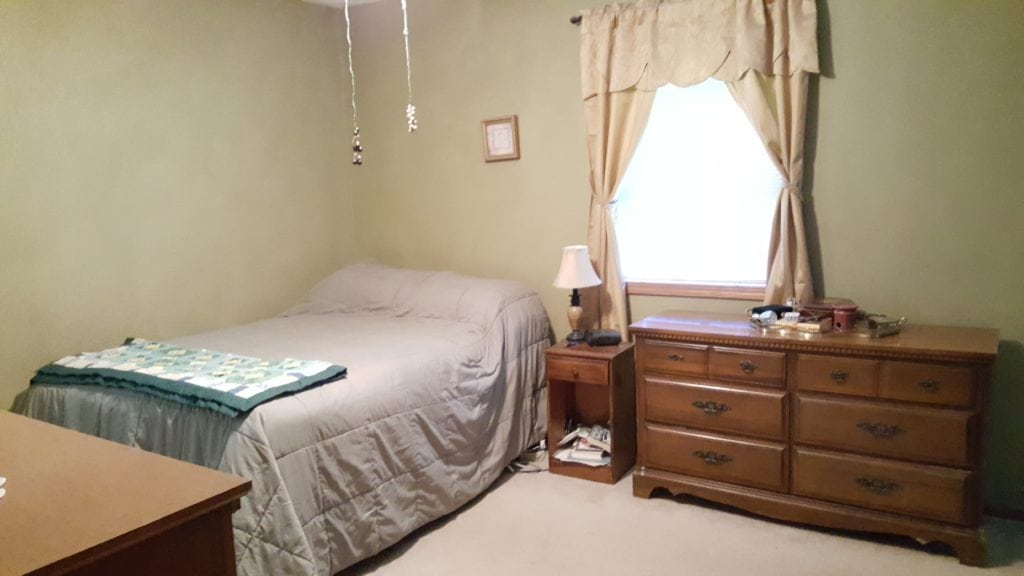What is As Is?
I recently did a staging consultation for a customer who was to list her house soon. The listing realtor suggested I pay a visit to help her decide what to keep, what to remove, and how to arrange the furniture. I am always more than happy to do so.
When I arrived, she told me she was going to list the house “as is.” I believe her thinking was she didn’t plan to do repairs, updates, or even much normal maintenance. I was perplexed by this because there were just a few things she could do that would make a big difference in how the house was presented.
She had already cleaned out most of her personal belongings. It was just a matter of a new furniture layout in this living room.
By changing the position of the sofa with the easy chair (and vice versa), plus orient the rug parallel to the sofa, the room suddenly became more cohesive and pleasing. I also removed the TV tray.
The office and second bedroom were in good condition, just needing some minor tweaks. She had already cleared out the basement rooms. So, all-in-all, just cleaning and removing the last of the personal items was all that remained. Until we got to the master bedroom….
Master Bedroom
This is an example of where just minimal changes can make a big difference. We turned the bed toward the window and moved the long dresser against the wall where the bed was. I highly encouraged her to paint this room an off-white color and get a different bedspread with a little pattern in it. So, for about $100 for paint and a double-sized bedspread, this room could look just fine.
Selling a house “as is,” however, does not relieve the seller of their obligation to disclose any “material adverse facts,” or to fill out a Real Estate Condition report. A buyer might still decide to pay for a Home Inspection Report to ease their minds about what kinds of repairs might be needed. If a seller has never lived in the house, i.e., a personal representative, are not required to fill out the Real Estate Condition report. The listing agent, therefore, must disclose any material adverse facts that they have knowledge of.
“As is” actually has a legal definition, and the buyer will probably have to sign paperwork indicating that he or she understands the exact terms of the transaction. So, what does that mean in terms of the sale of the house?
- A buyer might think the house is worse than it actually is.
- The offer-to-purchase amount will probably be lower than the house is worth.
- The listing agent will need to dispel the negative connotations about the house’s value.
- You will attract fewer buyers than if in “good-to-turn key-condition
Investment companies or “flippers” usually pay cash and purchase “as-is” houses. The downside is these type of buyers will want to purchase your home for pennies on the dollar.
Home Inspection Report
Sellers who wish to sell their house “as is,” realize there might be a second round of negotiations after the buyer’s agent shows the listing agent the home inspection report. The seller may decide they do not wish to cure, or the listing agent may write there will not be any secondary negotiations after the purchase price has been agreed upon. A home that is properly prepared for the real estate market and is priced accordingly will usually have a relatively smooth home inspection process.
Disclosure:
Every home sale is unique, having specific needs, goals and limitations. You may really need to sell “as-is” due to financial distress or under stressful situations such as a severe illness. The best way to determine what your options are is to speak to a licensed realtor or an attorney. He or she can look over your specific home and you can explain what you want/need. Then, your agent or attorney can help guide you through the steps of selling your home, on your terms.


